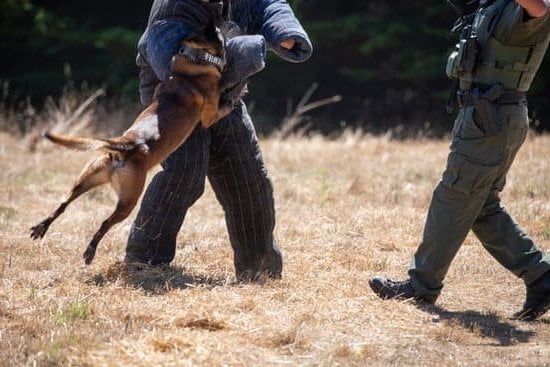Are you wondering how to train a smart dog? Training your intelligent canine companion can be both rewarding and beneficial for both you and your pet. Whether you have a Border Collie, Poodle, or Australian Shepherd, understanding the importance of training is the first step in developing a harmonious relationship with your smart dog. In this article, we will explore how to effectively train a smart dog, from setting clear goals to troubleshooting common challenges and even teaching advanced tricks.
Training a smart dog is crucial for their mental and emotional well-being. Dogs are intelligent creatures that thrive on mental stimulation and physical activity. Without proper training, they can become bored, anxious, or even develop undesirable behaviors. Setting clear and achievable training goals is essential for unlocking your dog’s potential and creating a strong bond with them.
Consistency in training routines is another key element in successfully training a smart dog. This means dedicating time each day to work on obedience commands, cues, and mental stimulation activities. Positive reinforcement techniques play a vital role in encouraging desirable behaviors in your smart dog while discouraging negative ones.
In the following sections, we will delve deeper into each aspect of training for a smart dog, including basic obedience commands, troubleshooting common challenges, teaching advanced tricks and behaviors, and ultimately creating a strong bond through training with your intelligent canine companion.
Setting Clear and Achievable Training Goals
Training a smart dog requires careful planning and setting clear and achievable training goals. This section will discuss the importance of having specific objectives in mind when working with an intelligent canine companion.
Understanding Your Dog’s Potential
Before setting training goals, it is important to understand your dog’s breed and individual capabilities. Different breeds have different strengths and weaknesses, so it’s essential to tailor your training goals to suit your dog’s natural inclinations and abilities. For example, a Border Collie may excel in agility and advanced obedience, while a Shiba Inu may thrive in activities that engage their independent nature.
Setting Realistic Milestones
When establishing training goals for a smart dog, it’s crucial to set realistic milestones that can be achieved within a reasonable timeframe. Break down larger goals into smaller, manageable tasks to prevent overwhelming your dog or yourself. By celebrating small victories along the way, you’ll also maintain motivation and momentum in your training sessions.
Adapting Goals as Needed
As you progress with your smart dog’s training, it’s important to remain flexible and adaptable with your goals. Not all dogs learn at the same pace, so be prepared to adjust your expectations based on your dog’s individual progress and any unexpected challenges that may arise. Remember that the ultimate goal is to nurture a strong bond with your furry friend through positive reinforcement and consistent training efforts.
Developing a Positive and Consistent Training Routine
When it comes to training a smart dog, having a positive and consistent training routine is crucial for their development. By establishing a regular schedule and sticking to it, you can create an environment that allows your dog to understand what is expected of them and when. Here are some tips for creating a positive and consistent training routine:
- Set specific training times: Determine the times of day that work best for both you and your dog, and commit to these consistent training sessions.
- Keep training sessions short and focused: Smart dogs have the ability to learn quickly, but they also have short attention spans. Limit training sessions to 10-15 minutes at a time to keep your dog engaged and motivated.
- Use the same cues and commands: Consistency in your verbal cues and commands will help your dog understand what is expected of them. Avoid using different words or phrases for the same action.
By implementing these strategies, you can establish a positive and consistent training routine that will benefit both you and your smart dog.
In addition, be sure to create a clear distinction between training time and playtime. This will help your dog understand when they need to focus on learning new behaviors or commands, versus when they can relax and enjoy free time. consistency provides security – It reduces anxiety due to irregularities making them feel safe.
Remember that every smart dog is unique, so it’s important to tailor your training routine to suit their individual needs. With patience, dedication, and positivity, you can lay the groundwork for successful training experiences with your intelligent canine companion.
Utilizing Positive Reinforcement Techniques
When it comes to training a smart dog, positive reinforcement is a powerful tool. This method focuses on rewarding desirable behaviors and ignoring or redirecting undesirable ones. By using positive reinforcement techniques, you can effectively communicate with your dog and encourage the behaviors you want to see repeated.
Understanding the Principles of Positive Reinforcement
Positive reinforcement involves giving your dog something pleasant immediately after they perform a desired behavior, making it more likely for them to repeat that behavior in the future. Whether it’s treats, toys, or praise, the key is to reward your dog in a way that motivates them.
Implementing Consistent Rewards
Consistency is key when utilizing positive reinforcement. Ensure that you reward your dog every time they exhibit the desired behavior, especially during the initial stages of training. This will help your dog understand what is expected of them and reinforce their understanding of the command or cue.
Avoiding Punishment-Based Techniques
While it may be tempting to resort to punishment-based methods when dealing with challenging behaviors, it’s important to refrain from doing so when training a smart dog. Punishment can lead to fear and anxiety in dogs, hindering their ability to learn and build trust with their owner. Instead, focus on redirecting unwanted behaviors and reinforcing positive ones through positive reinforcement techniques.
Teaching Basic Obedience Commands and Cues
When it comes to training a smart dog, teaching basic obedience commands and cues is essential for creating a well-behaved and responsive canine companion. These basic commands serve as the foundation for more advanced training and can help improve communication between you and your smart dog. Some of the most important basic obedience commands include “sit,” “stay,” “come,” “down,” and “heel”.
To effectively teach these commands, it’s important to use positive reinforcement techniques such as treats, praise, and playtime. Smart dogs are quick learners and highly motivated by rewards, so incorporating positive reinforcement will make the training process more enjoyable and successful for both you and your furry friend.
Consistency is key when teaching basic obedience commands and cues to a smart dog. It’s important to use the same verbal cues and hand signals every time you give a command. This consistency helps your dog understand what is expected of them and reinforces their understanding of each command.
Additionally, practicing these commands in different environments can help generalize the behavior, ensuring that your smart dog responds reliably no matter where you are. With patience, consistency, and positive reinforcement, teaching basic obedience commands and cues to a smart dog can be a rewarding experience that strengthens the bond between you and your furry companion.
Engaging in Mental Stimulation Activities for a Smart Dog
Mental stimulation is essential for smart dogs as it helps keep their minds active and sharp. This type of activity can prevent boredom, anxiety, and destructive behavior in your intelligent canine companion. There are various ways to engage your smart dog in mental stimulation activities, ensuring that they are both entertained and challenged.
One effective method of mental stimulation is through interactive toys and puzzles designed specifically for dogs. These toys often require the dog to problem-solve in order to receive a treat or complete a task. Examples include treat-dispensing balls, maze puzzles, and snuffle mats. These toys not only provide mental exercise but also help satisfy the dog’s natural instincts to forage and hunt for food.
In addition to interactive toys, engaging your smart dog in scent work can provide both mental and sensory stimulation. Dogs have an incredible sense of smell, and engaging them in activities that utilize this ability can be highly rewarding for them.
You can introduce scent work by hiding treats or objects with strong scents around your home or yard for your dog to find. You can also teach them to identify specific scents through training exercises, which can be particularly stimulating for their minds.
| Mental Stimulation Activity | Description |
|---|---|
| Interactive Toys and Puzzles | Toys that require problem-solving skills to receive a treat or complete a task. |
| Scent Work | Activities that engage the dog’s sense of smell by hiding treats or teaching them to identify specific scents. |
Troubleshooting Common Training Challenges
Training a smart dog can be a rewarding experience, but it’s not without its challenges. Some common issues that arise during training need to be addressed in order to ensure success. Here are some common training challenges and how to troubleshoot them:
- Lack of focus: If your smart dog seems easily distracted during training sessions, try breaking up the training into shorter sessions with plenty of breaks in between. Providing ample mental stimulation through interactive toys and puzzles can also help improve focus.
- Difficulty with a specific command: If your dog is struggling to learn a particular command, such as “stay” or “come,” it may be helpful to go back to the basics and re-teach the command in a different environment or with different rewards. Consistency and patience are key when working through difficult commands.
- Overexcitement: Some smart dogs can become overly excited during training, making it difficult for them to focus. In these situations, it’s important to remain calm and assertive, using positive reinforcement to reward calm behavior. Incorporating calming exercises and activities into your training routine can also help manage overexcitement.
By recognizing and addressing these common training challenges, you can ensure that your smart dog is set up for success in their training journey. Remember that every dog is unique, so it may take some trial and error to find the right approach for your furry friend. With patience, persistence, and a positive attitude, you can overcome these challenges and continue to build a strong bond with your smart dog through training.
Training for Advanced Tricks and Behaviors
Training a smart dog goes beyond just basic obedience commands and cues. Once your dog has mastered the basics, you can move on to training for advanced tricks and behaviors. This kind of training not only keeps your dog mentally stimulated, but it also strengthens the bond between you and your furry friend.
When training for advanced tricks and behaviors, it is important to have clear and achievable goals. Start with one behavior or trick at a time and be patient with your dog as they learn. Consistency is key in this type of training, so make sure to practice daily and reinforce the desired behavior.
Utilizing positive reinforcement techniques is crucial when teaching advanced tricks and behaviors. Rewarding your dog with treats, praise, or playtime will encourage them to continue learning and performing new tricks. Remember that every dog learns at their own pace, so be understanding if they need extra time to master a new behavior. With persistence and positivity, you can train your smart dog to impress everyone with their advanced skills.
Creating a Strong Bond Through Training With Your Smart Dog
In conclusion, training a smart dog is not only beneficial for teaching obedience commands and tricks, but it also plays a crucial role in creating a strong bond between the owner and the pet. By understanding the importance of training and setting clear goals, dog owners can establish a positive and consistent routine that utilizes positive reinforcement techniques. This not only helps in teaching basic obedience commands and cues, but also provides mental stimulation activities for smart dogs.
Furthermore, when facing common training challenges, it is important to troubleshoot with patience and perseverance. It may require modifying the training approach or seeking professional help if needed. Additionally, as the smart dog progresses in its training, there are opportunities to advance into teaching more advanced tricks and behaviors. This not only challenges the dog’s intellect but also deepens the mutual understanding between the owner and the pet.
Lastly, through the process of training, dog owners can develop a strong bond with their smart dogs. This bond is built on trust and clear communication, leading to a harmonious relationship that benefits both the pet and its owner. Therefore, by investing time and effort into training activities, dog owners can enjoy a fulfilling companionship with their intelligent canine companion.
Frequently Asked Questions
How Do You Train a Highly Intelligent Dog?
Training a highly intelligent dog requires mental stimulation, consistent training, and clear communication. These dogs are usually quick to learn commands and behaviors, so keeping their minds engaged is crucial.
Using challenging activities, problem-solving games, and advanced training techniques can help keep them engaged and prevent boredom. Positive reinforcement methods, such as treats and praise, also work well with smart dogs to encourage desired behaviors.
Are Smart Dogs Harder to Train?
Smart dogs can actually be easier to train because they tend to pick up on commands and tasks more quickly than other dogs. However, they can also become bored easily if not mentally stimulated enough, which may lead to stubbornness or destructive behaviors.
It’s important for owners to provide plenty of mental exercise and training opportunities for smart dogs to keep them engaged and obedient.
How Can You Tell if a Dog Is Intelligent?
There are several signs that can indicate a dog is intelligent. Quick learning ability, problem-solving skills, adaptability to new situations, good memory recall, and the ability to understand complex commands or tasks are all traits of an intelligent dog.
Some breeds are known for their intelligence, but individual dogs within any breed can also display high levels of intelligence based on their behavior and responses in various situations.

Welcome to the blog! I am a professional dog trainer and have been working with dogs for many years. In this blog, I will be discussing various topics related to dog training, including tips, tricks, and advice. I hope you find this information helpful and informative. Thanks for reading!





